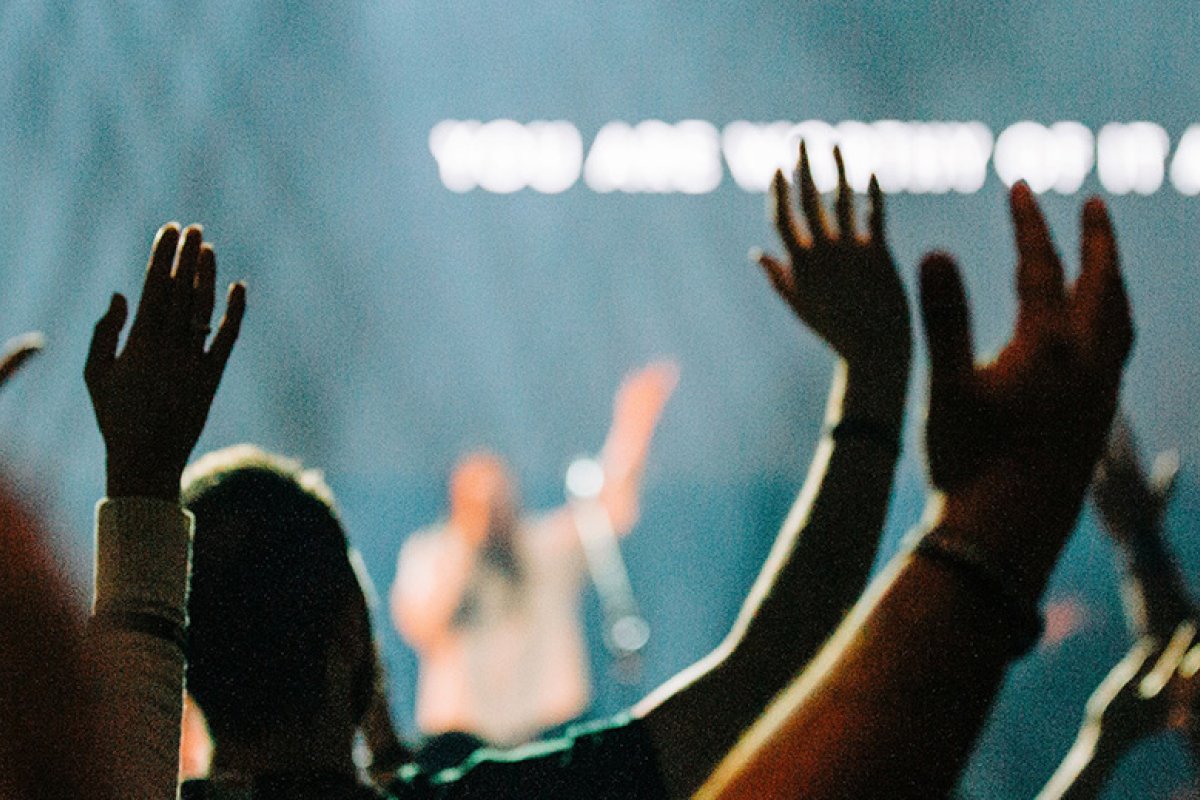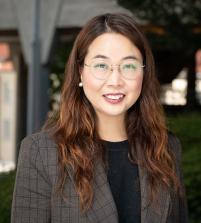
What’s So Special about the Asbury Revivals?
Even moments that seem most sacred, amid revival, have the potential to reinscribe the racially and politically profane.
Over the course of two weeks, Gen Z college students at Asbury University in Wilmore, Kentucky have remained in chapel for a series of revivals. Their unending gatherings garnered millions of TikTok views and extensive media coverage, from CNN to the Washington Post, Fox News, and the Christian Broadcasting Network. What’s so special about the Asbury revivals?
In many ways, the #asburyrevivals are a familiar scene in America. They remind me of growing up in California, where we regularly anticipated revivals at my youth group’s summer camp—large gatherings, spirit-filled singing, youth walking up to the altar to accept Jesus Christ as Lord and Savior for the first time, and praying for healing. For our immigrant Korean American Methodist church, revival usually peaked the last night of camp, when the preacher led us in an extended time of worship or preached an especially passionate sermon, detailing a poignant testimony of a life of sin turned around because of his (yes, usually his) faith in Jesus.
Indeed, we can see that revivals are happening all across the country, if we stop to pay attention, especially to immigrant, second and third generation churches as well as Black-led storefront churches and megachurches. As my colleague Jonathan Calvillo, a sociologist of religion with “deep roots in Latino Pentecostalism,” notes: “Our peoples experienced revival all the time. Revival services, but also unplanned moments of extended worship where people laid it all down at the altar and testified to life change.” Outside of the mainstream US media’s gaze, revivals are happening regularly, and even throughout the world.
In my new research on megachurches in South Korea, I have attended services on a Wednesday, Friday, and Sunday where people stir up, and are stirred up in, revival. Consider the young adult Sunday worship service at one of the largest Methodist churches in the world, which is located in the Apkgujeong area of Seoul, Korea (and, whose founder attended Asbury Theological Seminary). During their afternoon Sunday services, young adults sing, pray, and speak about a “young army” rising up to go out “to the nations,” not unlike this Asbury University student’s recounting of the revivals, in her interview with Tucker Carlson.
But these events do not make US headlines.
So, why have Asbury revivals, in particular, garnered so much attention from mainstream media, social media, and Christian broadcasting? As a historian and scholar of religion, I am not interested in weighing in on the authenticity of revivals. I know from my own upbringing and intellectual training, we have to take participants’ experiences into account, whether or not we agree with their explanations of their experiences. But, as a scholar, I am interested in the impact such events have on society. What is being revived at these gatherings? Would media outlets know to look for revivals in Latinx immigrant contexts like my colleague’s? If they witnessed revivals in Asian and Asian American contexts, would they consider it newsworthy?
I submit that the Asbury revivals have garnered national attention because they focus on the experiences of white Christians in general and white evangelicals in particular. When former US vice president Mike Pence tweets his approval of the recent Asbury revivals, and recounts his experiences of the 1970s Asbury revivals, he signals his connection to a broader white evangelical experience. I am aware that Black, Latinx and Asian and Asian Americans also attended the Asbury revivals, and that they may express experiences that go beyond “white” evangelicalism. However, these media moments have the overwhelming effect of centering and sacralizing white religious and cultural experiences. Moreover, when Sean Feucht, a praise band leader turned hopeful politician, tweet celebrating the Asbury revivals, it reminds us that the culture wars—in which white evangelicals are deeply entrenched—have connections to religious experiences like praise and worship, and revivals where people sing for days together.
Indeed, modern evangelical America is rooted not only in the political and racial but also the religious. The evangelical battle against same-sex marriage and abortion are politicized acts. But they are also connected to religious experiences, including revivals, that band white evangelicals together, sometimes even with nonwhite evangelicals in the US and around the world. To be sure, there are political strategists like Paul Weyrich who orchestrated the agenda of the religious right, tying abortion politics to the agenda of evangelicals, which did not have much to do with the category of the “religious” or religious experience. But there were also the massive revivals white evangelicals attended, with Billy Graham at the helm, amid the rise of the New Right. Not all of those who attended these revivals were right-leaning. But did conservative and authoritarian political visions get nurtured through these revivals? Yes.
That is what I found in my research for the book Race for Revival.
In 1973, Billy Graham led his largest “crusade” in South Korea, with 1.1 million people gathered at the Yoido Plaza in Seoul. Koreans recounted they were blessed at this revival, and 73,000 people made “decisions for Christ.” But that revival was also intertwined with the authoritarianism of the Park Chung Hee regime. At that revival, Koreans felt they could own their faith as Koreans, and that they could even outpace the religious accomplishments of white evangelicals like Graham, in a race for revival. At the same time, however, Koreans became intertwined in a global network that espoused colorblind spirituality. Without a theology or political vision to direct them otherwise (the Park regime had cracked down on political theologies critiquing the government), their revivalism nurtured spiritual growth to the exclusion of their collective liberation from US empire and political freedom from authoritarianism.
But note that revivals did not always bend to the status quo in the history of modern Korean Christianity. In the aftermath of the 1907 Pyongyang revivals, a historic cohort of Korean Protestants used their faith to protest Japanese empire, defending the rights of colonized Koreans. Thus, we see that revival could function as a double-edged sword, leading to social change or defending the status quo. These historical examples from world Christianity shed light on the paradoxical politics of revival. And, they instruct us to ask of contemporary US revivals: What will come of the Asbury revivals? Will it result in a doubling down on the white Christian experience or will it result in collective repentance for white and Christian supremacy? Will it result in the uplifting of nonwhite Christian voices and experiences or will it become a reference point for white Christians to fuel a political vision to “take America back for God”?
Sometimes, it is the moment when one feels closest to God, amid a spiritual awakening, that also requires a chastening—to step back and ask: is this revival helping our neighbor? Is it leading to greater peace, justice and love for our neighbor or is it recentering the experiences of the racially and religiously privileged in America, for all of the world to witness? As I conclude in my book, “one race does not have a monopoly on revival.” But if one does not challenge such assumptions, with theological and political courage, even moments that seem most sacred, amid revival, have the potential to reinscribe the racially and politically profane.
As it turns out, the recent Asbury revivals may be more everyday occurrences in the US than the media suggests. Yet, in my estimation, what is special is that they present an opportunity for Gen Z attendees, and their educators, to act boldly—to experience a heartfelt piety that translates into social holiness, for peace, love and justice for all, not just for a select few.
Image by Bree Anne via Unsplash


